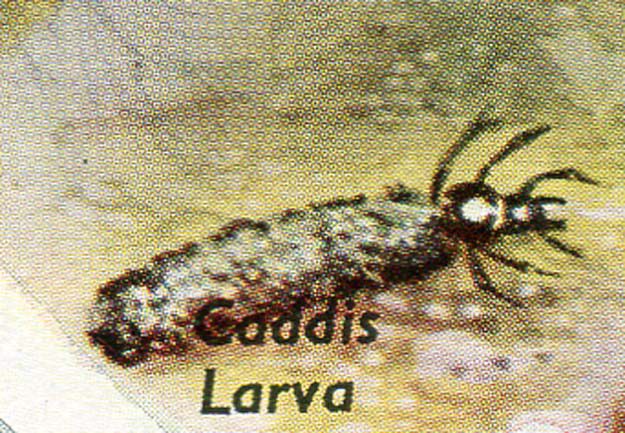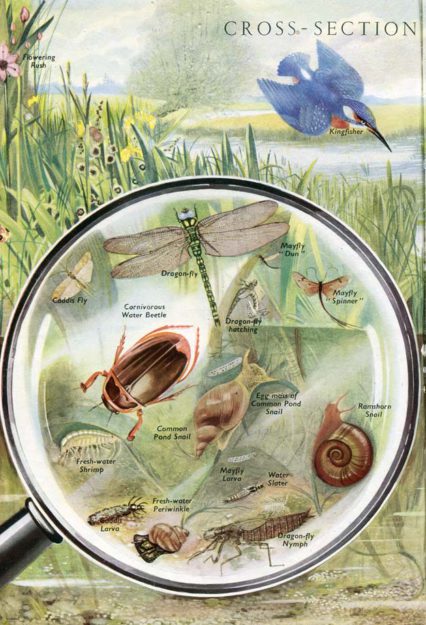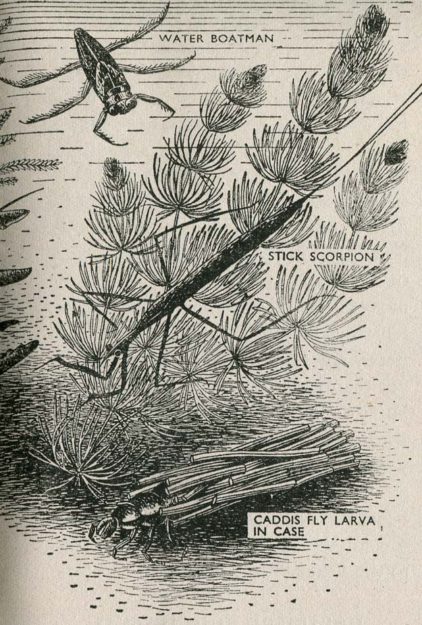W. Aspen, W. Brown, W. Flower, J. S. Rowland, & L. J. Wolff, The Nature Lover’s Companion, Londres, Odhams Press, 1949.
If you per down through clear water at a sandy patch you will often see, apparently, tiny group of sticks walking about. But on picking up one of the stick clusters you will find that a caterpillar-like little animal has build itself portable house. This is one of the caddis-worms, which turn into many kinds of moth-like flies seen hovering over the water or laying eggs on the surface. Each little egg group is surrounded with jelly which swells in the water.


When the minute caddis-worm hatches it at once begins to build a house. If its ancestors used sand only, it uses sans only; if they used leaves, it uses leaves; just as a chaffinch or tit makes a nest typical of its kind. The caddis has a delicate body, and each of the many types of house is silken smooth within, however rough on the outside.
Some caddises bits off rectangular bits of weed and stick them together with the utmost regularity, until they form a perfect spiral case, broader at the head end as the caddis grows. It keeps the house in position by hooks on its tail, and only puts its armoured head and legs out in front. Some caddises attach sticks and stems three or four inches long to litttle sand houses, and others make their homes of tiny pieces of stick arranged criss-cross, each stuck firmly on before the next is grasped. You may even find cases with minute shells fastened all over them. If its interesting to make a collection of different types of empty shells.
